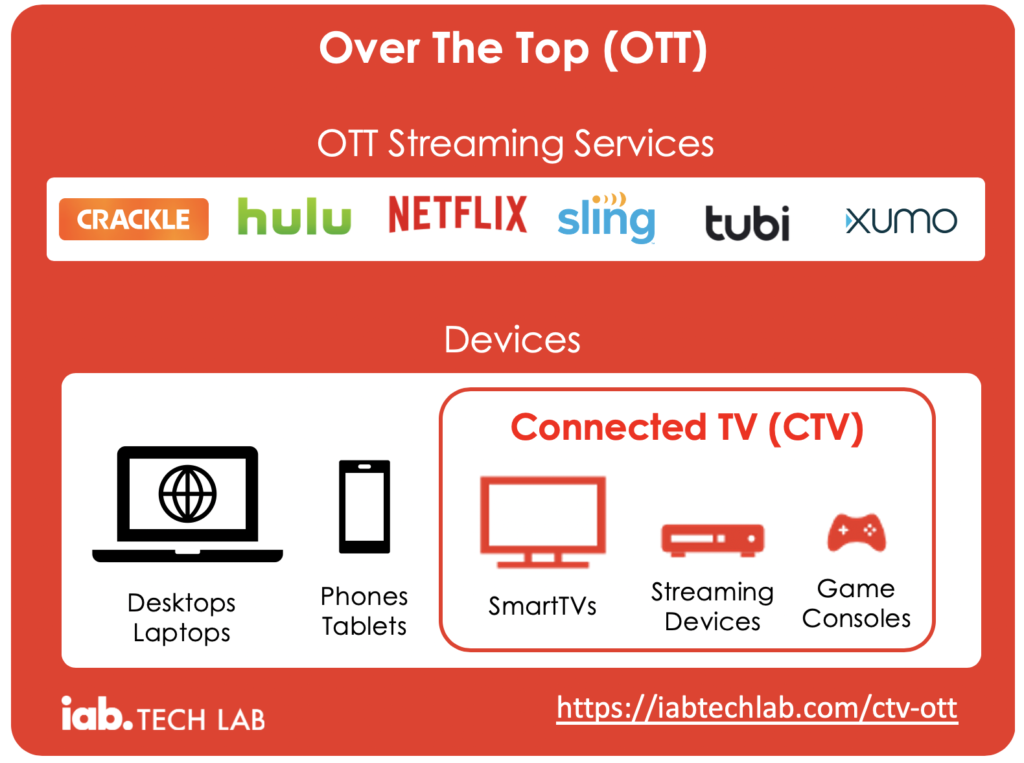
CTV vs. OTT: Did I say it right?
The advent of streaming services in the past decade has completely transformed the way we consume entertainment. Initially a lot of people switched to streaming to save money and escape the advertising-heavy world of TV, but now ads are slowly trickling into streaming services as a way for companies to make additional revenue from usership. As advertisers, we have yet another opportunity to reach our audience – while they are relaxing at home (or on the go), watching a movie or TV series.
Cue in the coining of terms such as OTT and CTV, and the ensuing confusion over which term to use and when. Vendors, media planners, and clients use both terms interchangeably when they are referring to different things. Let’s clear that up right now:
OTT
OTT is an acronym for “over-the-top,” which originated from broadcast. Traditional TV is distributed via set-top-box (STB) or satellite TV. Content that was originally distributed for those more traditional channels began to be streamed via the internet on desktop and mobile devices, or “over-the-top” of the box.
Nowadays, OTT content can be distributed via desktop, mobile devices, tablet, or Smart TVs, mainly by streaming platforms such as Hulu or Netflix.
CTV
CTV is an acronym for Connected Television. It refers to TV devices that can stream content from the internet, either because they are Smart or because they are linked to a console that allows them to make that connection, such as Roku or Apple TV.
The difference
OTT refers to the content running on a device, whereas CTV categorizes the device through which that content is distributed. Although these days most OTT content is distributed via CTVs, it can also run on desktop, mobile, and tablets.
Bottom line, use CTV to refer to the type of devices where your content is being distributed, and OTT for the type of content that is being distributed (and by whom.)
This iab.Tech Lab graph explains it well.

Benefits of running both
Running CTV advertising helps marketers effectively reach an audience that is no longer consuming traditional TV content, the Cord Cutters or Cord Shavers. Audience targeting for CTV is usually dependent on the platform of choice and their access to data, but very similar to programmatic media buying.
Running CTV is significantly cheaper than running traditional TV and provides opportunities for measurement that traditional TV is unable to achieve. CTV audiences are generally unable to skip or fast-forward through ads, and the content where your ads run is more high-quality, reducing brand safety risks on that medium.
You’ll want a partner, however, that is able to distribute that content even to users who use those streaming services on non-CTV devices, in order to get the most reach for your campaign.